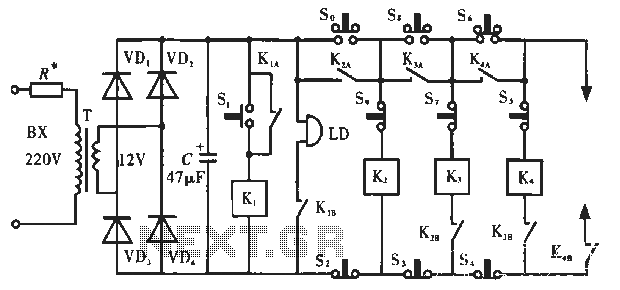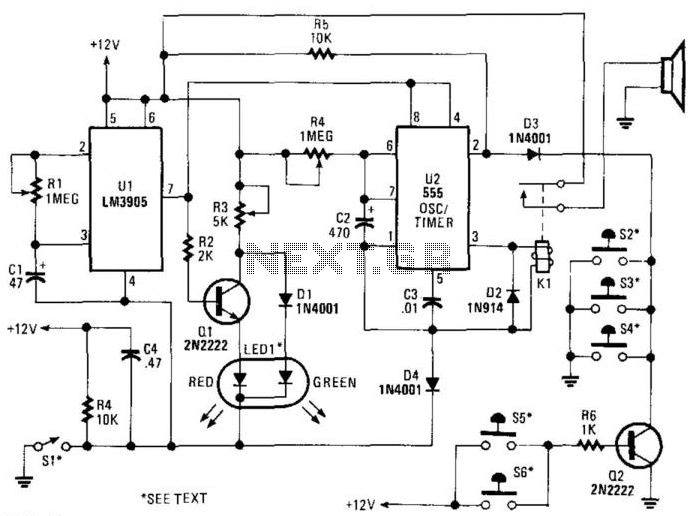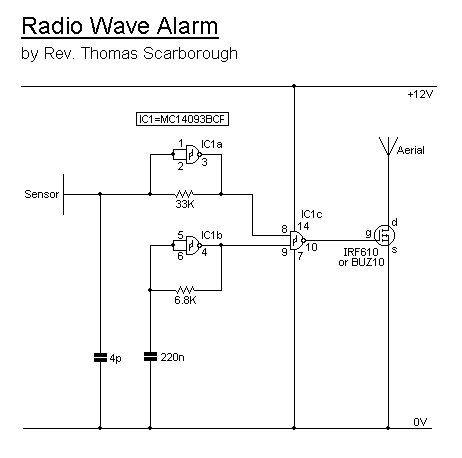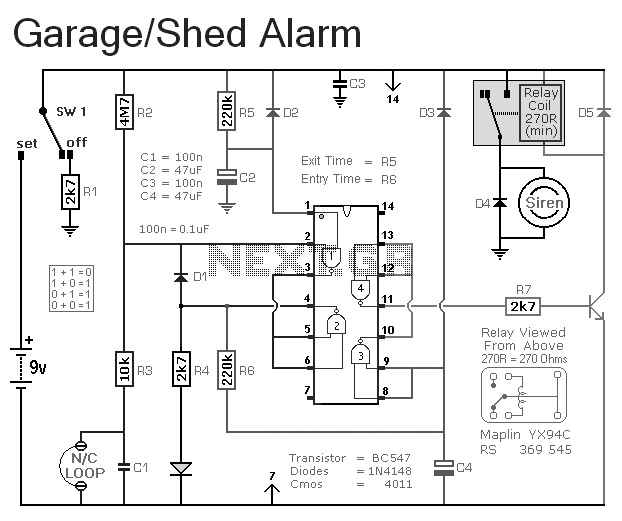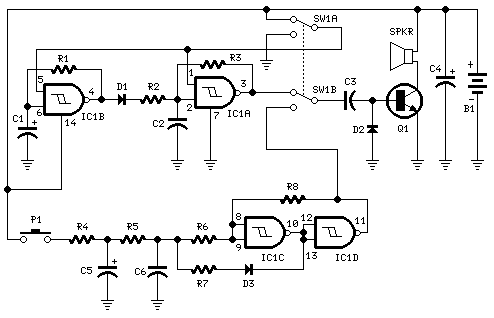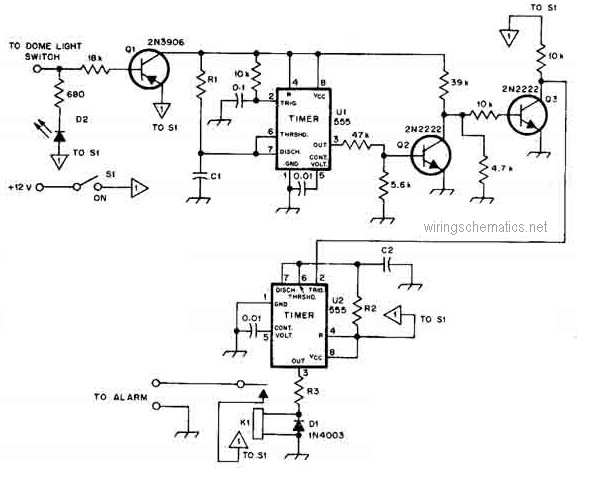
Wailing Alarm Siren
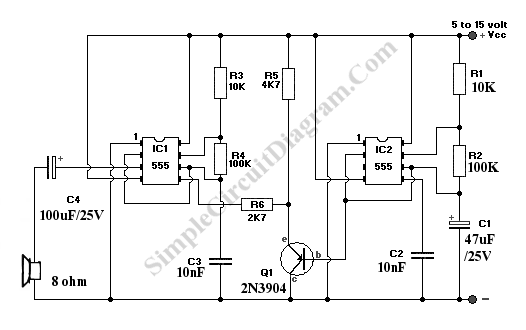
This alarm siren circuit produces a continuous frequency sweep, resulting in a warbling sound. The duration of the warbling is approximately 6 seconds, with 3 seconds allocated for frequency sweeping upward and 3 seconds for sweeping downward.
The alarm siren circuit typically consists of an oscillator, a frequency modulator, and a power amplifier. The oscillator generates a square wave signal that is used to create the desired frequency sweep. This signal is fed into a frequency modulator, which alters the frequency of the oscillator output over a specified period, producing the characteristic warbling sound.
The frequency sweep is accomplished by varying the control voltage applied to the modulator, which can be achieved using a capacitor and a resistor in an RC timing circuit. The time constant of this RC network determines the rate of frequency change. For this specific circuit, the upward frequency sweep lasts for 3 seconds, followed by a downward sweep for another 3 seconds, creating a complete cycle of 6 seconds.
To amplify the output sound, a power amplifier is connected to the modulated signal. This amplifier boosts the signal strength to drive a loudspeaker or siren, ensuring that the sound produced is loud enough to serve its intended purpose, such as alerting individuals in an emergency situation.
The design may also incorporate a power supply circuit, which can be powered by batteries or an AC source, ensuring that the circuit operates reliably under various conditions. Additional components such as diodes may be included for protection against reverse polarity, and capacitors can be used for filtering to ensure a clean output signal.
Overall, this alarm siren circuit is an effective solution for producing a recognizable alert sound, utilizing simple electronic components to achieve the desired acoustic effect.This alarm siren circuit give continuous frequency sweep, a warbling sound. The warbling period is about 6 seconds, 3 seconds for frequency sweeping up and 3.. 🔗 External reference
The alarm siren circuit typically consists of an oscillator, a frequency modulator, and a power amplifier. The oscillator generates a square wave signal that is used to create the desired frequency sweep. This signal is fed into a frequency modulator, which alters the frequency of the oscillator output over a specified period, producing the characteristic warbling sound.
The frequency sweep is accomplished by varying the control voltage applied to the modulator, which can be achieved using a capacitor and a resistor in an RC timing circuit. The time constant of this RC network determines the rate of frequency change. For this specific circuit, the upward frequency sweep lasts for 3 seconds, followed by a downward sweep for another 3 seconds, creating a complete cycle of 6 seconds.
To amplify the output sound, a power amplifier is connected to the modulated signal. This amplifier boosts the signal strength to drive a loudspeaker or siren, ensuring that the sound produced is loud enough to serve its intended purpose, such as alerting individuals in an emergency situation.
The design may also incorporate a power supply circuit, which can be powered by batteries or an AC source, ensuring that the circuit operates reliably under various conditions. Additional components such as diodes may be included for protection against reverse polarity, and capacitors can be used for filtering to ensure a clean output signal.
Overall, this alarm siren circuit is an effective solution for producing a recognizable alert sound, utilizing simple electronic components to achieve the desired acoustic effect.This alarm siren circuit give continuous frequency sweep, a warbling sound. The warbling period is about 6 seconds, 3 seconds for frequency sweeping up and 3.. 🔗 External reference
